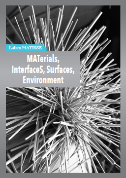Séminaire du Professeur invité Milorad MILOSEVIC (Département de Physique de l'Université d'Antwerpen - Belgique)

Multiscale approach to superconductivity: from first principles to bulk observables
Jeudi 1er décembre à 16h30 - UPMC, couloir 22-23, salle 317, 3e étage
In this talk, I will present some of our very recent multiscale considerations of conventional superconductors. First I will discuss how the long established textbook descriptions of types of superconductivity and vortex matter can fail even in elementary superconductors, and even more so in newer multigap compounds (MgB2 being the archetypical two-gap example). Then I will show how our Extended Ginzburg-Landau theory can help with the latter, and how to obtain the needed parametrization of equations starting from first principles. We will then look in more detail to the case of osmium diboride (OsB2), to identify the origin, characteristic length scales, and coupling of its superconducting condensates, to reveal that it is a very first type-I multiband superconductor. Finally, I will show how the multigap properties of MgB2 and OsB2 change when samples are thinned to atomistic scale. Here I will particularly discuss the gap opening on the surface band(s), which in ultrathin limit becomes comparable to bulk gaps in both amplitude and superconducting density of states, hence strongly affects the physics of the material while increasing the robustness of the superconducting state in the limit where superconductivity is expected to gradually cease.
![]()
The Fermi surface of OsB2, consisting of three sheets: two quasi-ellipsoidal sheets (red and blue) and an anisotropic sheet (green). Shubnikov-de Haas orbits in applied magnetic fields H||b and H||c are also indicated, and used for direct comparison to experiments. The subsequent evaluation of e-ph coupling enables identification of the pairing contributions and the resulting superconducting condensates.
Egalement dans la rubrique
MATISSE en chiffres
- 4 disciplines : Chimie, Physique, Sciences de la Terre, Patrimoine
- 400 permanents
Contact
Direction
Florence Babonneau
Administration
Communication
Emmanuel Sautjeau



